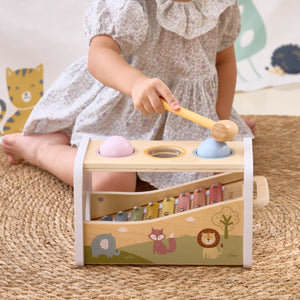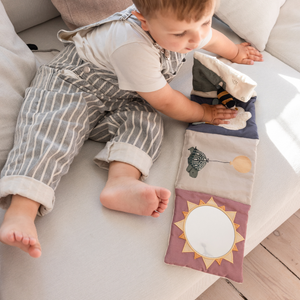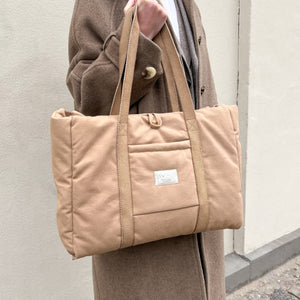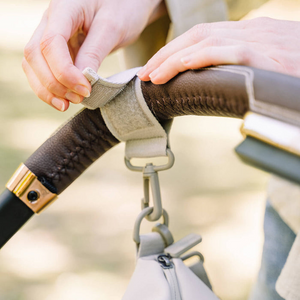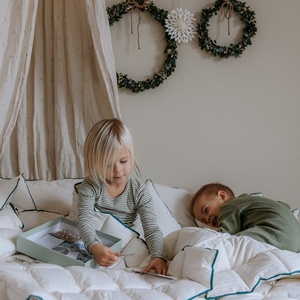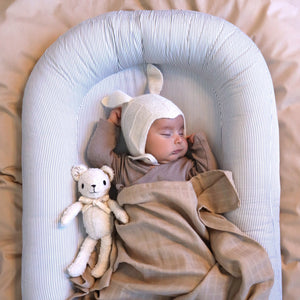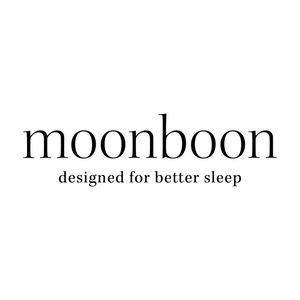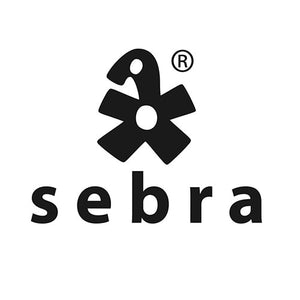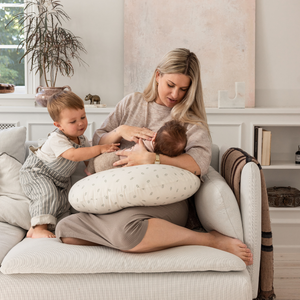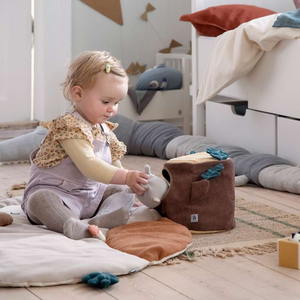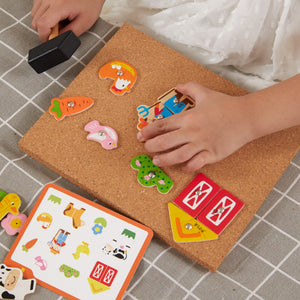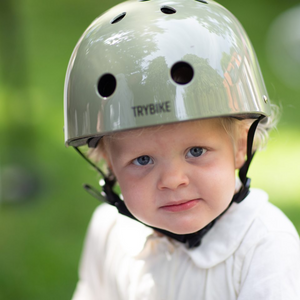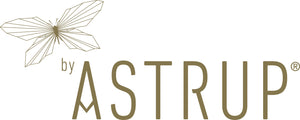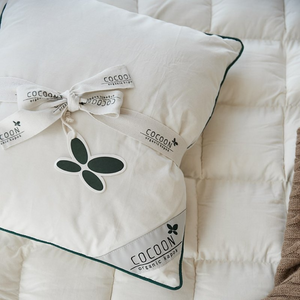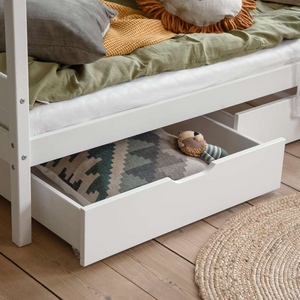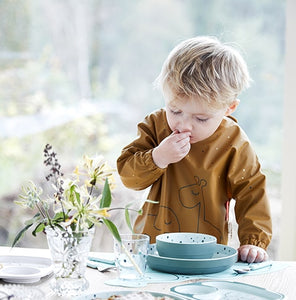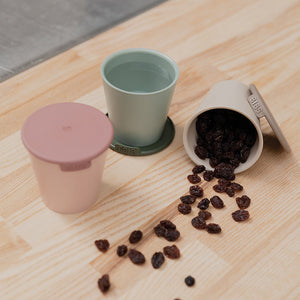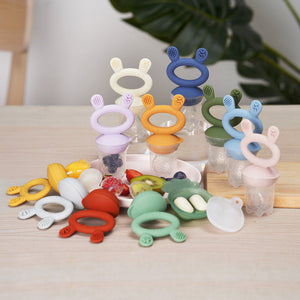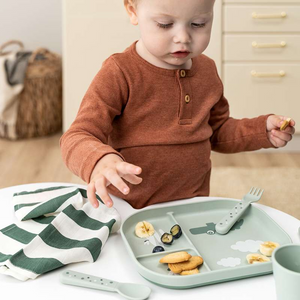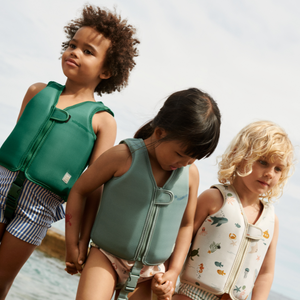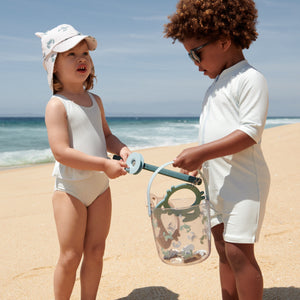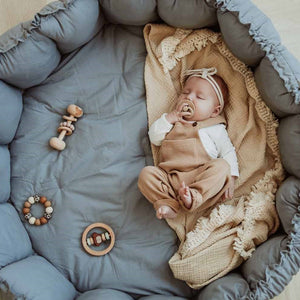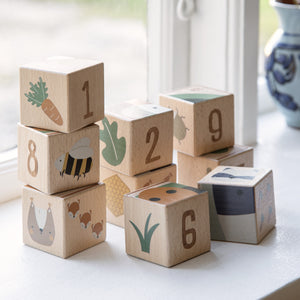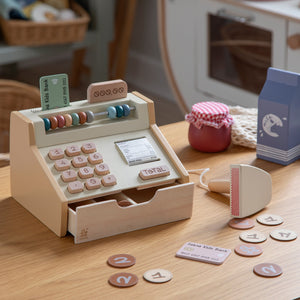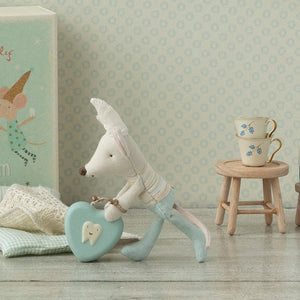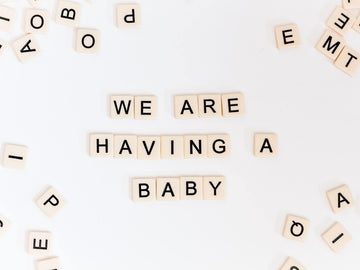Baby equipment
7 FREE checklists for baby
at Mammashop Mammazine
on
Aug 11, 2021

"Preparing for a baby" comes as a completely natural part when you are expecting. You may have been shopping a bit for the little one during your pregnancy, but as the birth approaches, you can easily start to doubt whether you have remembered everything and how much you will need.
To make it easier for you, we have created a checklist for the baby, so you can be fully prepared. Remember that needs can vary from family to family, so use the list as inspiration. There are also print-friendly versions available on the page, with some empty fields so you can add your own items to the checklist.
Checklist: Breastfeeding and mealtime:
|
Plan A, for most, is to breastfeed their baby. A good portion of patience, a little help from nursing cream, and good nursing pads can take you far with breastfeeding. But always remember - a good mother is not measured by her breasts. Talk to your health visitor if doubts or problems arise.
- Disposable nursing pads.
- 2-3 sets of wool or silk nursing pads – helps keep the breast warm and minimize the risk of mastitis or lumps.
- 1-2 nursing bras – it can be difficult to know, before the milk comes in, what size you will actually need, so wait to buy too many of them.
|
 |
- 2-3 nursing tops – or shirts that are easy to unbutton for "milk bar" access.
-
Nursing pillow – makes it easier to achieve a good breastfeeding position.
- Nursing cream for the breasts.
- Nipple shields - they can be helpful if you have slightly sensitive nipples or soreness.
- 15-20 cloth diapers – to cover your shoulder when you need to burp the baby or if the baby spits up.
- 6-8 bibs – though not necessary right at the start.
- 2-3 pacifiers – can be good to have to relieve the breast if the baby has a strong sucking need.
- D-Drops – from the time the baby is 14 days old, it should receive D-vitamin drops. If the baby tends to have a hard stomach, it may be beneficial to choose drops that are free from coconut oil and contain probiotics.
- 1-2 bottles and some formula on hand, if you choose not to breastfeed.
|
Checklist: Sleep time:
|
A baby sleeps many hours a day, especially in the beginning. Make sure to have a good mattress and duvet – it is well worth the investment. If you want it to be a little extra cozy (in the beginning, it is mostly for the parents), a good sleep toy can be nice – it will accompany your baby for many years to come.
- Cradle or crib – many choose to use the bassinet at first and can therefore manage with a crib.
- Good mattress.
- Baby duvet – it is actually not necessary to have a pillow for the baby in the first couple of years, but if you would like to use a pillow, it should be completely thin and flat.
|
 |
- Bed bumper – it can create a little extra coziness and security when it is sleep time.
- 3 sets of baby bedding.
- Fitted sheets.
- Waterproof mattress cover – if there happens to be a little leakage beside the diaper, it is nice that it doesn't affect the mattress.
- Night light – it can be nice to have some gentle lighting when/if you need to get up at night.
- Sleep teddy bear.
- Baby monitor.
|
NB. Later you will also need a junior duvet and bedding that fits it.
Checklist: Changing and Care Time:
|
Next to breastfeeding and sleeping, many hours are also spent at the changing station, so it can be well worth considering how to arrange the space most efficiently. Make sure that everything you need is within reach.
- Changing table, -shelf or -dresser – it varies what people prefer.
- Changing pad – preferably one that is water-resistant, you almost can't avoid that the baby sometimes pees just as you take off the diaper.
- Diaper bin – you only want to take out diapers to the big container once a day.
|
 |
- Diapers – have some in both size 1 and size 2, you can often get enough for the first couple of days in the various free baby packages you can get around. This way, you can test both sizes and brands, and choose the diaper brand that suits your baby.
- 15-20 cloth diapers for the changing pad – you generally can't have too many cloth diapers, a lot get used in one day, and you don't want to wash all the time.
- Foam pads or large cotton pads – cotton can be gentler on the baby's bottom during the initial days when there are many diaper changes.
- Washing basin – if you don't have water nearby the changing station, it can be beneficial to have a washing basin with water next to it.
- Bathtub, possibly a bath chair and stand – remember no oil or soap in the water until the umbilical stump has fallen off.
- Baby bath towel with a hood – this makes it easy to wrap the baby after a nice bath.
- Cotton swabs – mainly to dry around the umbilical stump.
- Mild skin care and ointment for the baby's bottom.
- Baby oil – once the umbilical stump has fallen off, you can use a bit of oil in the bath water, it is good for the skin.
- Fine comb and soft brush – to help with cradle cap.
|
Checklist: Clothes for the summer baby:
|
In some of the warmer months – the few we have here in Denmark, the baby does not need too much clothing. You can get by with an extra cardigan and a thin cotton hat for the slightly cooler days and evenings.
- 10-12 bodysuits in cotton – both with long and short sleeves.
- 1-2 pairs of tights – if it’s a girl, you might want a few more pairs for the dresses.
- 4-5 pairs of socks – babies easily get cold feet – even if it can be warm.
- 4-5 sleepsuits – preferably with feet, so the baby doesn’t have to sleep with socks on.
|
 |
- 7-8 rompers – again, those with feet can be an advantage, so you avoid the baby kicking off the socks.
- 4-5 tops.
- 4-5 pants – preferably choose pants that fit a little loosely, so the baby can move.
- 2-3 cotton hats.
- 1-2 cotton sweaters/jackets or hand-knitted cardigans – there’s always someone in the family or social circle who can knit.
|
Checklist: Clothes for the winter baby:
|
Admittedly, the cold months are probably the ones we have the most of. Babies can have difficulty regulating their body temperature, so it’s a good idea to have wool in the clothing.
- 10-12 bodysuits in wool – both with short and long sleeves.
- 2-3 pairs of wool tights – they are good to wear under pants.
- 4-5 pairs of socks.
- Booties – they can provide extra warmth for little feet that can easily get cold.
- 4-5 sleepsuits with wool – preferably with feet, so the baby doesn’t have to sleep with socks on.
|
 |
- 7-8 rompers – again, those with feet can be an advantage, so you avoid the baby kicking off the socks.
- 4-5 tops.
- 4-5 pants – preferably choose pants that fit a little loosely, so the baby can move.
- 2-3 thin wool hats.
- Thin snowsuit – if you are not using a Voksipose for the stroller or car seat.
- Mittens – preferably in wool.
|
Checklist: Going out:
|
It is unavoidable that you will end up taking a little trip, or two during the day. Therefore, remember that comfort needs to be in order for both baby and you.
- Stroller.
- Mattresses for both the stroller and the carrycot.
- Baby duvet – it can be nice to have an extra one.
- Insect net and rain cover.
- Sunshade – Not all models of strollers have built-in sunshades.
- Stroller harness.
- Wool blanket or sheepskin – in the winter months, it can provide extra insulation and warmth if the baby sleeps on a wool blanket or sheepskin.
|
 |
- Diaper bag – make sure the bag is good and spacious. There should be room for more than you might expect: diapers, cloths, wet wipes, ointment, change of clothes, toys (when the baby is a bit older), bottle, and formula (if you are not breastfeeding), etc.
|
Checklist: On the Go:
|
A good car seat and some entertainment for the drive - this can make the whole experience much better for all of you. Remember to include breaks at the beginning for the longer trips to stretch out.
- Car seat – it can be an advantage to choose one with a base, so it is easy to take the baby in and out of the car.
- Car sleeping bag or snowsuit.
- Sunshades for the car windows – it can be beneficial even if you have tinted windows, which are not always tinted enough.
- Baby mirror – so you can see the baby in the rearview mirror, but the baby will also have the opportunity to look at themselves.
|
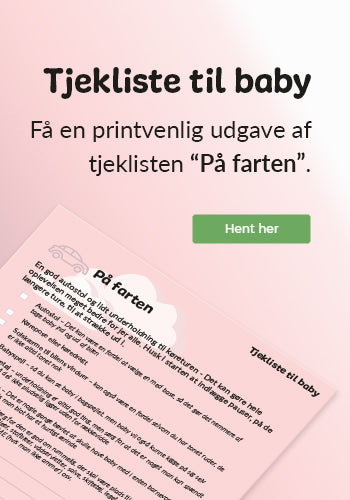 |
- Toys – entertainment is always a good thing, but make sure it is something you can secure so it doesn’t suddenly lie out of reach.
- Baby carrier – sometimes it can be a hassle to have the baby with you, either in a stroller or car seat if you just have a quick errand.
- Diaper bag – make sure the bag is good and spacious. There should be room for more than you might expect: diapers, cloths, wet wipes, ointment, change of clothes, toys (when the baby is a bit older), bottle, and formula (if you are not breastfeeding), etc.
|











